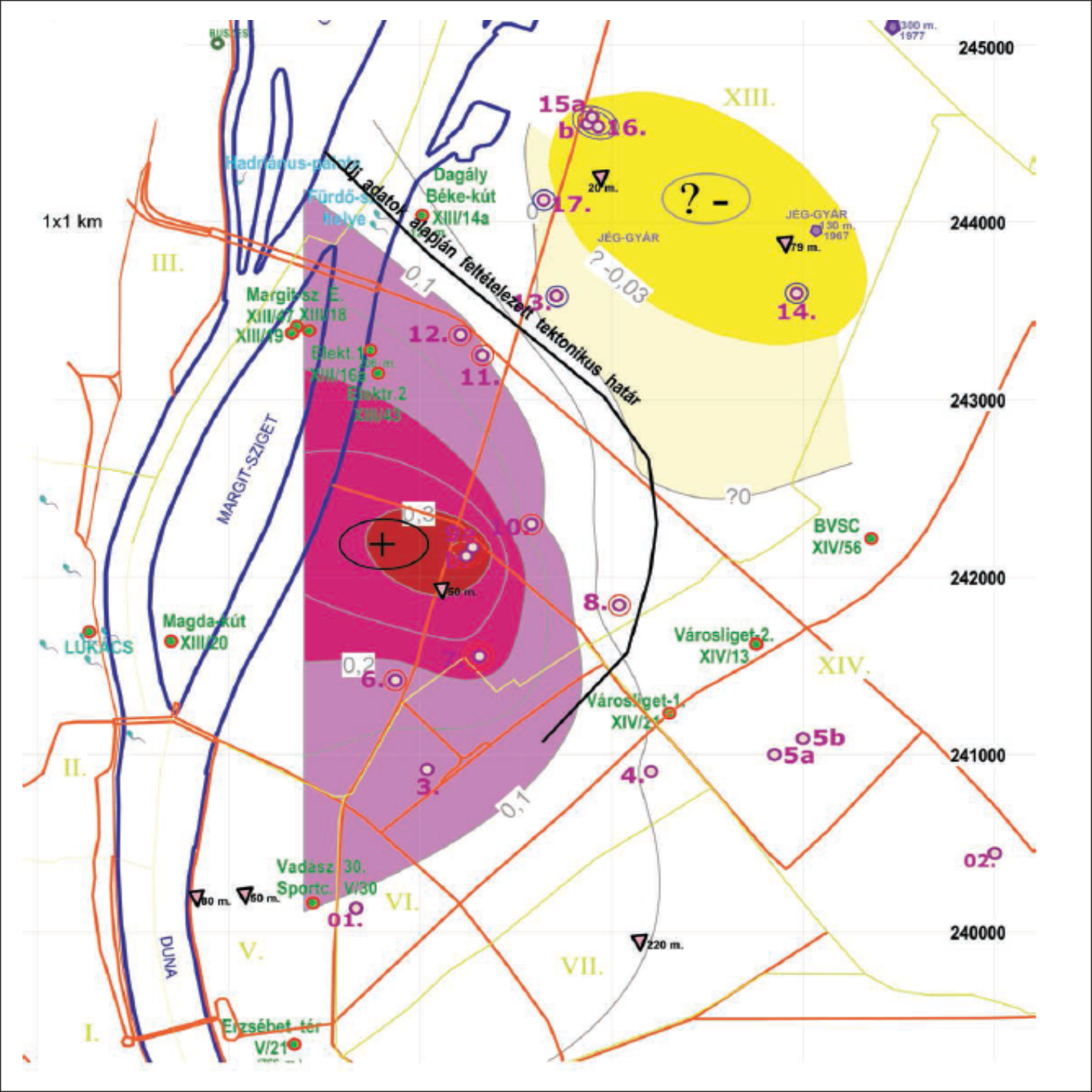Budapest city core: Intense geothermal anomalies and their tectonic interpretations based on geothermal heat-pump borehole thermal tests
Abstract
Ground Source Heat-Pump (GSHP) boreholes can provide the most numerous new data for Urban Geology projects. The authors used the thermal measurements taken in several ground-source heat-pump sites to locate previously unknown geological phenomenon within the city core of Budapest, the capital of Hungary. The only reliable scientific data are the baseline temperature-log measured during the initial phase of individual thermal response tests. Our data suggests that these temperatures measured within finished geothermal U-loops represent the real ground temperature distributions.
We found one of the highest geothermal gradients in Hungary not connected to volcanism and natural thermal springs. 66 °C occurred in the depth of only 120 meters below surface (m b.s.) at the corner of two main streets in Pest.
Our research indicates, that in geothermal areas, shallow-temperature profiles can be used to locate hidden geological structures. We could outline the existence of a previously unknown fault, as well as modified the location of the main tectonic fault of the area, the so called “Buda Thermal Line”. The hydrogeologic discharge along the Buda thermal line appears to be much wider, not necessarily confined under the Danube according to the new temperature data.
The intense positive anomaly we found under the southern part of the XIII district of Budapest represents a previously unknown horst-structure (a hidden pair of the Margaret Island). We expect 45–65 °C thermal water aquifer within 100–300 m b.s. under this part of the city. This tectonic structure could not have been detected using only the available seismic and borehole data, so this result can highlight the importance of geological documentations of GSHP drillings (which are mainly non existent).
Interestingly, our data also shows an extended negative geothermal anomaly at the north part of our research area. Our maps and several separate T/depth logs indicated a ground temperature decrease of appr. 2–5 °C in depths between 30 and 100 m b.s. This is probably not a natural phenomenon, but the result of intense urban coverage. We have three possible theories to explain it. The first one is related to direct cooling by the Budapest Ice Factory works of the area. Curves with downward decreasing temperatures can also occur if some of the upper layers are heated up by the urban heat-island phenomenon or by exotherm reactions of forgotten waste landfills.
GSHP data can definitely assist not just their routine heating+cooling installations, but thermal water-based heating projects as well. Both options should be kept in mind in geothermal areas, like Budapest, and the required quality of borehole geological data should be improved accordingly.
















